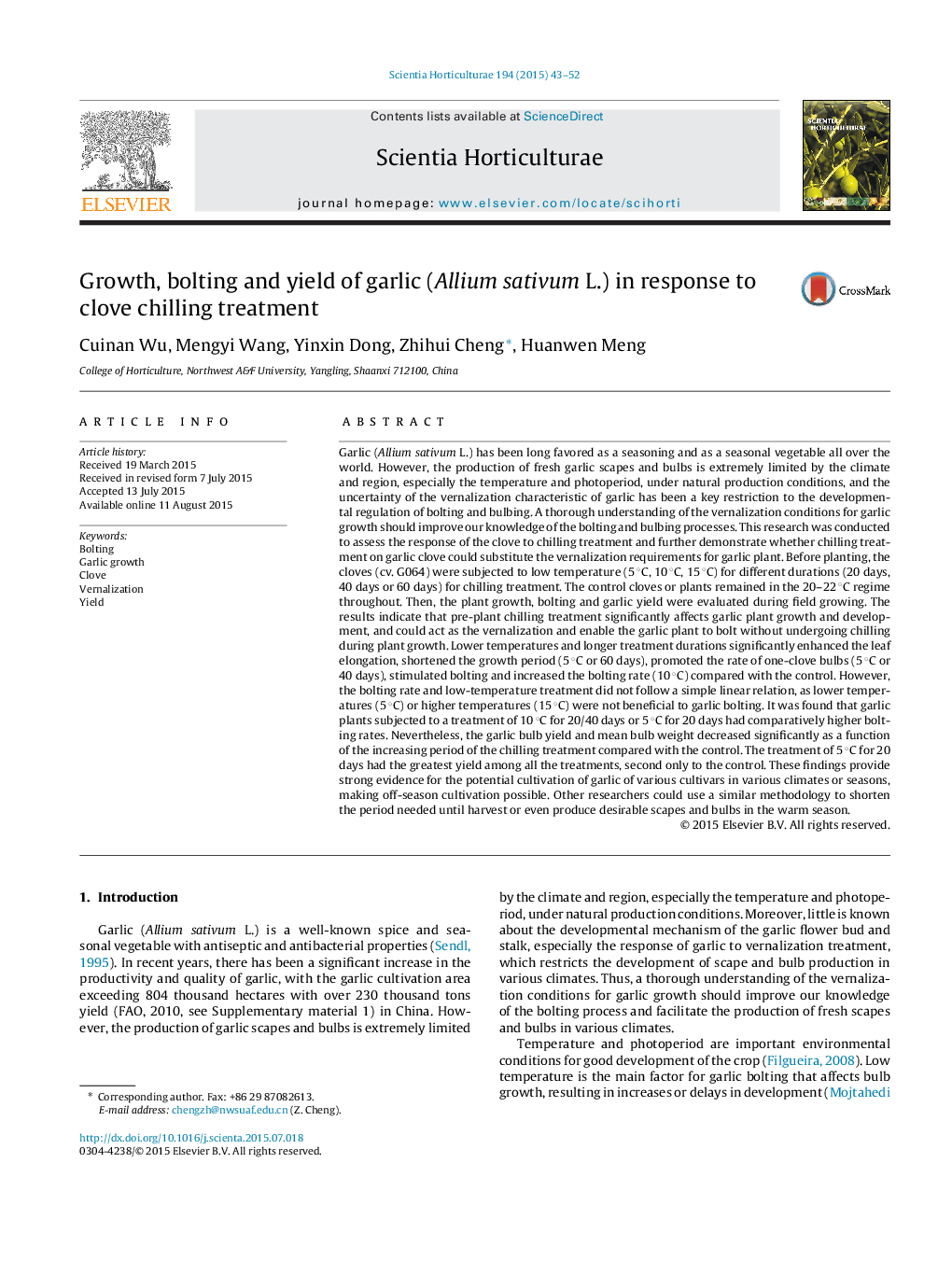| کد مقاله | کد نشریه | سال انتشار | مقاله انگلیسی | نسخه تمام متن |
|---|---|---|---|---|
| 4566314 | 1628804 | 2015 | 10 صفحه PDF | دانلود رایگان |

• Pre-planting clove chilling treatment can saturate garlic vernalization requirement.
• 5 °C for 20 days or 10 °C for 40 days is critical for clove chilling treatment.
• Garlic growth and development changed significantly after clove chilling treatment.
• The lower temperature or longer duration significantly increased the bolting rate
• Bulb yield was significantly reduced after pre-planting clove chilling treatment.
Garlic (Allium sativum L.) has been long favored as a seasoning and as a seasonal vegetable all over the world. However, the production of fresh garlic scapes and bulbs is extremely limited by the climate and region, especially the temperature and photoperiod, under natural production conditions, and the uncertainty of the vernalization characteristic of garlic has been a key restriction to the developmental regulation of bolting and bulbing. A thorough understanding of the vernalization conditions for garlic growth should improve our knowledge of the bolting and bulbing processes. This research was conducted to assess the response of the clove to chilling treatment and further demonstrate whether chilling treatment on garlic clove could substitute the vernalization requirements for garlic plant. Before planting, the cloves (cv. G064) were subjected to low temperature (5 °C, 10 °C, 15 °C) for different durations (20 days, 40 days or 60 days) for chilling treatment. The control cloves or plants remained in the 20–22 °C regime throughout. Then, the plant growth, bolting and garlic yield were evaluated during field growing. The results indicate that pre-plant chilling treatment significantly affects garlic plant growth and development, and could act as the vernalization and enable the garlic plant to bolt without undergoing chilling during plant growth. Lower temperatures and longer treatment durations significantly enhanced the leaf elongation, shortened the growth period (5 °C or 60 days), promoted the rate of one-clove bulbs (5 °C or 40 days), stimulated bolting and increased the bolting rate (10 °C) compared with the control. However, the bolting rate and low-temperature treatment did not follow a simple linear relation, as lower temperatures (5 °C) or higher temperatures (15 °C) were not beneficial to garlic bolting. It was found that garlic plants subjected to a treatment of 10 °C for 20/40 days or 5 °C for 20 days had comparatively higher bolting rates. Nevertheless, the garlic bulb yield and mean bulb weight decreased significantly as a function of the increasing period of the chilling treatment compared with the control. The treatment of 5 °C for 20 days had the greatest yield among all the treatments, second only to the control. These findings provide strong evidence for the potential cultivation of garlic of various cultivars in various climates or seasons, making off-season cultivation possible. Other researchers could use a similar methodology to shorten the period needed until harvest or even produce desirable scapes and bulbs in the warm season.
Journal: Scientia Horticulturae - Volume 194, 14 October 2015, Pages 43–52